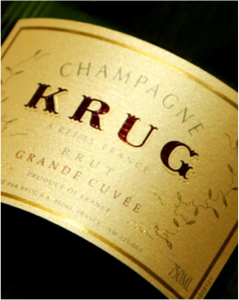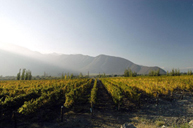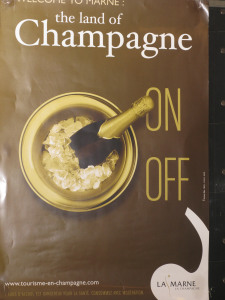Month: December 2010
TIPS FOR CHAMPAGNE AND CIGAR PAIRINGS – NEW YEAR’S 2011
 Leaving aside, for the moment, the indisputable fact that tobacco isn’t as popular as it used to be (the reasons for which have no need of being repeated here), the twenty-first century is hardly devoid of connoisseurs eager to set aflame a finely wound Cuban cigar when the right occasion arises. And what could be a better occasion than the upcoming New Year’s Eve, a time when upbeat outdoor and indoor festivities would seem to call for a Cohiba or two? But, would it surprise you to learn that Scotch and brandy are scarcely the only types of alcoholic beverages that have a tendency to pair well with cigars? In fact, believe it or not champagne, among other types of sparkling wines, can serve as an excellent accompaniment to that set of cigars you might have been saving for a special occasion. The reason? Evidently, according to our sources, the inherent flavour profile of tobacco would appear to have a natural affinity for being paired with white wines that sparkle; and the ethereal delicacy of many types of champagne lend themselves incredibly well to only enhancing the enjoyment of as fine a premium Cuban cigar as a Cohiba – La Línea, Clásica, Maduro, or otherwise. More importantly, like all other premium products, there are certain recommended guidelines to follow when deciding on what specific champagne is best paired with what specific type of cigar. As a general rule, it would stand to reason that lighter-styled champagnes, or ones with a greater focus on finesse and style than richness and intensity, ought to be paired with cigars of a more delicate and elegant disposition, perhaps even a cigar of smaller size. Alternatively, for more powerful types of champagne (from top cuvées to the most prestigious vintages) your best bet would be probably to seek out cigars with greater assertiveness and longevity, not to mention ones boasting a larger dimension. And if you have a few champagne and cigar-loving friends to share these with, so much the better. After all, what is the celebration of a New Year without a little company?
Leaving aside, for the moment, the indisputable fact that tobacco isn’t as popular as it used to be (the reasons for which have no need of being repeated here), the twenty-first century is hardly devoid of connoisseurs eager to set aflame a finely wound Cuban cigar when the right occasion arises. And what could be a better occasion than the upcoming New Year’s Eve, a time when upbeat outdoor and indoor festivities would seem to call for a Cohiba or two? But, would it surprise you to learn that Scotch and brandy are scarcely the only types of alcoholic beverages that have a tendency to pair well with cigars? In fact, believe it or not champagne, among other types of sparkling wines, can serve as an excellent accompaniment to that set of cigars you might have been saving for a special occasion. The reason? Evidently, according to our sources, the inherent flavour profile of tobacco would appear to have a natural affinity for being paired with white wines that sparkle; and the ethereal delicacy of many types of champagne lend themselves incredibly well to only enhancing the enjoyment of as fine a premium Cuban cigar as a Cohiba – La Línea, Clásica, Maduro, or otherwise. More importantly, like all other premium products, there are certain recommended guidelines to follow when deciding on what specific champagne is best paired with what specific type of cigar. As a general rule, it would stand to reason that lighter-styled champagnes, or ones with a greater focus on finesse and style than richness and intensity, ought to be paired with cigars of a more delicate and elegant disposition, perhaps even a cigar of smaller size. Alternatively, for more powerful types of champagne (from top cuvées to the most prestigious vintages) your best bet would be probably to seek out cigars with greater assertiveness and longevity, not to mention ones boasting a larger dimension. And if you have a few champagne and cigar-loving friends to share these with, so much the better. After all, what is the celebration of a New Year without a little company?
By: Liz Palmer and Julian Hitner
$70,000 Champagne Cellar
Created by Porsche Design exclusively for the Veuve Clicquot champagne house, the Vertical Limit is a stunning champagne cellar that keeps bottles at their proper temperature (12°C). It has a stainless steel exterior that will leave you breathless. Every piece of the cellar is made by hand, which adds to its quality.
A limited set of 15 Vertical Limit cellars are available for $70 000 a piece, which is not bad considering it comes with 12 magnums of Veuve Clicquot of the best vintage wines.
Trend Hunter
Seth Box, of Moët Hennessy USA, On Champagne Glasses
As director of education for Moët Hennessy USA, Seth Box is responsible for spreading the word about his company’s spirits, wines and Champagnes — including Dom Pérignon, Krug, Veuve Clicquot, Moët et Chandon and Ruinart — to as many people as possible. Simply put: he regularly takes people out for drinks.
Champagne, he says, shouldn’t be saved for a special occasion. “It’s embarrassing that we, as a country, drink as little Champagne as we do,” Mr. Box said. “Because it’s so much fun, tastes delicious and makes people happy.”
Like most Champagne aficionados, he has definite opinions about the glass in which it should be served. “If you’re someone who appreciates the nuances and finer aspects of Champagnes, the glass is really important,” he said.
He said that while flutes are “great for presentation and showcase bubbles beautifully, from the tasting standpoint, the shape isn’t ideal.” He prefers a shape that is a combination of a white-wine glass and a Champagne glass — one with a bulbous bottom and a narrower top. “You want something with a wineglass on the bottom, to capture the aromas,” he said, which “then tapers up a bit so you focus those aromas on the nose.”
With the holiday entertaining season in high gear, Mr. Box spent a recent morning searching for Champagne-worthy glassware. At Baccarat, on Madison Avenue, he found the Remy stems “boring, but perfect: the bowl will capture the aromas and then focus around the back, and you can hold it without mucking up the glass.” The Vega Flutissimo would probably not be a top pick for sommeliers, but he liked it “because it reminds us that Champagne is also about an aesthetic,” he said. “And the blue crystal adds a touch which is reminiscent of more classic times.”
Nearby, at Lalique, he picked the Facet Champagne flute. “If you’re going to do classic, do this,” he said. “It’s a gorgeous flute.”
Online, he found one of his favorites, the Spiegelau Hybrid. “The deep bowl and larger size allow the Champagne to aerate while still maintaining a sleek look,” he said.
He also liked Govino’s stemless shatterproof design, pointing out that its shape works for many wines and Champagnes, and its price ($12 for four) won’t break the bank.
Ultimately, though, the glass is secondary, he said: “Drink Champagne in anything. If it makes you happy to drink it out of a water cup or a cool little Italian country glass, go for it. Just drink, and be happy.”
New York Times
CHILE THE WORLD’S MOST ROMANTIC WINE PRODUCING REGION
 Many viticulturists consider Chile the world’s most romantic wine producing region. Showcasing its natural features such as the Andes in the east, the Pacific Ocean in the west, and the Atacama Desert in the north, Chile has become an increasingly preferred destination for any wine enthusiast.
Many viticulturists consider Chile the world’s most romantic wine producing region. Showcasing its natural features such as the Andes in the east, the Pacific Ocean in the west, and the Atacama Desert in the north, Chile has become an increasingly preferred destination for any wine enthusiast.
Chile is a long narrow country, roughly 4,000 km long and 175 km wide. The climate here is reminiscent of California, broadly Mediterranean, with lots of sun and Pacific breezes, with a long growing season.
The Colchagua Valley is one of Chile’s most important wine regions – it is on the verge of becoming one of the most celebrated winegrowing regions. Wine Enthusiast Magazine has named it “Wine Region of the Year” in 2005, and wine critics are also referring to this region as “The Next Napa”.
Known for its fine wine production, Colchagua Valley is the center for red wine production from Bordeaux varieties including Carmenère (nearly extinct Bordeaux variety), and most recently Syrah.
Fun Fact: If you start at the Town of Santa Cruz (Colchagua Valley) you can actually visit 10 wineries in less than 60 minutes.
Where to stay:
In the middle of the vineyards on the Tinguiririca riverbank sits Viña La Playa Winery & Hotel, the perfect wine-country escape. This classic Chilean hacienda-style property is easily accessible by car 2 ½ hrs from Santiago, Viña La Playa Winery & Hotel offers exquisite rooms with vaulted ceilings and fireplaces, along with exemplary service. Nestled among its own 250 hectares of historic vineyards, discover the secrets of La Playa Wines by taking a tour and a tasting. Dining in the main dining room you are offered international and local haute cuisine, along with La Playa wines. Recreational activities include: swimming, tennis, horseback riding, cycling, and canoeing, day trips to the valley’s other world class wineries and nightlife in the nearby city of Santa Cruz.
Discover the charm of this Chilean boutique resort, which offers a unique wine country experience.
http://www.laplayawine.com
www.visit-chile.org



